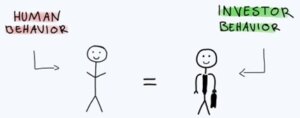A Brief Survey of Behavioral Finance
March 1, 2024
To Inform:
After months of studying a plethora of review material, I just sat for the first level of the CFA exam. It has been a joy to be immersed in a subject that I enjoy and desire to learn more about while studying nights and weekends. When this has been combined with the opportunity to learn from some brilliant and sharp investment minds at work, it simply deepens my understanding of important investment concepts.
This is exactly what happened about a week before exam day. A partner and portfolio manager at Fuller & Thaler, an asset manager focused on stock investing through a behavioral lens, came into town to speak at a CFA Society event. The firm was named after Dr. Russell Fuller, a pioneer in the application of behavioral finance, and Dr. Richard Thaler, the “father” of behavioral finance (and a great explainer of the CDO and hot-hand fallacy alongside Selena Gomez in The Big Short, if I may add). All of this rhymed with a concept I was studying at the time: behavioral biases of individuals.
Let’s break down what exactly behavioral finance is. This can be simply stated as the study of how psychology influences investor behavior. It starts with an understanding that investors are human. It focuses on trying to understand why investors often appear to lack self-control, act against their own best interest, and make decisions based on personal biases rather than facts. The overarching assumption here is that investors are biased.

Some biases can be easily managed because they are primarily based on faulty reasoning or irrationality. These can be categorized as cognitive errors, where statistical misunderstandings, information processing/memory errors, or illogical reasoning are the catalyst for the error. A quick fix of increased awareness, better training, or more information can help reduce these kinds of errors. Generally speaking, a bias that can be overcome with a relatively simple change in thought process or information ought to be regarded as a cognitive bias.
Here are some examples of cognitive biases in investing:
- Conservatism bias – failing to change a rational view once new information is available
- Confirmation bias – focusing on/seeking information that only supports prior beliefs
- Hindsight bias – overestimating the ability to correctly predict events after they occur
A picture of this could involve the dot-com bubble in the late 1990s and early 2000s. One investor may have been overly cautious or skeptical about the growth potential of various internet-related companies as stock prices skyrocketed. Another investor may have only sought out information that confirmed their beliefs about a new economy with endless growth in the technology sector, disregarding any notion of a “bubble” or unsustainability. Another investor, after prices plummeted, may have thought that this was such a predictable event and that they saw it coming all along!
Independent from conscious thought, emotional biases lie deep within the investor. These can stem from feelings, impulses, or intuition. Because its diagnosis is hard to uncover, overcoming an emotional bias is a bit more difficult. Generally speaking, any kind of bias that is based on unconscious emotion that the holder is unwilling or unable to change ought to be regarded as an emotional bias.
Here are some examples of emotional biases in investing:
- Loss-aversion bias – feeling more pain from a loss than pleasure from an equal gain
- Regret-aversion bias – choosing the option that would carry the least amount of regret
- Self-control bias – lacking discipline to favor short-term satisfaction over long-term goals
An illustration of this could surround the California gold rush in the mid-19th century. As the news of gold discoveries spread, hundreds of thousands of people rushed out west with dreams of striking it rich. There was an apparent fear of missing out on the opportunity to find gold and achieve great wealth, which was the driving factor for this flocking. The prospect of regret in not participating in this frenzy likely led many to make impulsive decisions and ultimately go. Despite the inherent risks and uncertainties in this endeavor, caution and rational decision-making was likely put to the wayside.
In short, behavioral biases are a part of all of us. We have emotions, possess imperfect rules of thumb, and make flawed assumptions. Our different backgrounds, experiences, and upbringings influence the formation of these biases and views when it comes to investing. We ought to be in tune with these things and not dismiss them immediately. Let’s heed the ancient wisdom of “knowing thyself” and seek to understand our biases. It is only then that we might strive to overcome them.

Written by Jake Lindaberry, Investment Analyst